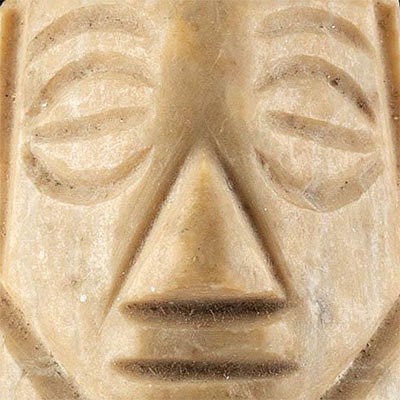Japanese Meiji Gilt & Silvered Wood Zushi Shrine, Fudo
Lot 54
About Seller
Artemis Gallery
686 S Taylor Ave, Ste 106
Louisville, CO 80027
United States
Selling antiquities, ancient and ethnographic art online since 1993, Artemis Gallery specializes in Classical Antiquities (Egyptian, Greek, Roman, Near Eastern), Asian, Pre-Columbian, African / Tribal / Oceanographic art. Our extensive inventory includes pottery, stone, metal, wood, glass and textil...Read more
Categories
Estimate:
$1,000 - $1,500
Absentee vs Live bid
Two ways to bid:
- Leave a max absentee bid and the platform will bid on your behalf up to your maximum bid during the live auction.
- Bid live during the auction and your bids will be submitted real-time to the auctioneer.
Bid Increments
| Price | Bid Increment |
|---|---|
| $0 | $25 |
| $300 | $50 |
| $1,000 | $100 |
| $2,000 | $250 |
| $5,000 | $500 |
| $10,000 | $1,000 |
| $20,000 | $2,500 |
| $50,000 | $5,000 |
| $100,000 | $10,000 |
| $200,000 | $20,000 |
About Auction
By Artemis Gallery
Jun 3, 2021
Set Reminder
2021-06-03 12:00:00
2021-06-03 12:00:00
America/New_York
Bidsquare
Bidsquare : It's a Small World | Diminutive Artifacts
https://www.bidsquare.com/auctions/artemis-gallery/its-a-small-world-diminutive-artifacts-7031
Join us for a very special auction featuring art & artifacts from East to West, North to South, and everywhere in between - with one small thing in common - size! Everything in this auction is approximately 6 inches or less - perfect for that last bit of shelf space in your curio cabinet! Artemis Gallery info@artemisgallery.com
Join us for a very special auction featuring art & artifacts from East to West, North to South, and everywhere in between - with one small thing in common - size! Everything in this auction is approximately 6 inches or less - perfect for that last bit of shelf space in your curio cabinet! Artemis Gallery info@artemisgallery.com
- Lot Description
East Asia, Japan, Meiji Period, ca. 19th century CE. East Asia, Japan, early Meiji, ca. 1880 CE. A finely carved, gilt, and silvered wooden zushi (a petite Buddhist shrine) portraying Fudo Myoo, which is the Japanese name for Acala, a Dharmapala (wrathful deity). Traditional to his Japanese iconography, Fudo is shown standing upon a green and black mound of earth, while holding a lasso in his left hand, as his braided hair hangs over his left shoulder. A gilt toga drapes over his dark-skinned body and a large red flame rises behind him. The wood zushi which holds this fierce deity displays a black-lacquered exterior as well as double doors that open to a lustrous silvered interior. Buddhist statues in Japan frequently reside in such zushi - wooden shrines with doors that can both reveal or conceal the deity within. Some scholars trace this Japanese interpretation of a Buddhist practice to Shinto shrines, where it is rare to find a statue, and they are always concealed. The petite scale of this zushi suggests that it was intended for travel. Size (of statue): 1.125" W x 3.25" H (2.9 cm x 8.3 cm); Size (of shrine): 1.625" W x 4" H (4.1 cm x 10.2 cm)
At the start of the Meiji Period (1868), the Japanese government declared that Buddhism must be separated from Shinto, the official state religion. Initially, enforcement of the separation was strict, and Buddhist images were stricken from many Shinto shrines. Within a few years, however, enforcement stopped, and Buddhist images crept back into Japanese religious art. A shrine like this one was created during this time period.
Provenance: private Hawaii, USA collection; ex-private Kona, Hawaii, USA collection
All items legal to buy/sell under U.S. Statute covering cultural patrimony Code 2600, CHAPTER 14, and are guaranteed to be as described or your money back.
A Certificate of Authenticity will accompany all winning bids.
We ship worldwide and handle all shipping in-house for your convenience.
#164585Right hand reattached and missing sword. Otherwise, excellent with light earthen deposits on interior.Condition
- Shipping Info
-
All shipping is handled in-house for your convenience. Your invoice from Artemis Gallery will include shipping calculation instructions. If in doubt, please inquire BEFORE bidding for estimated shipping costs for individual items.
-
- Buyer's Premium



 EUR
EUR CAD
CAD AUD
AUD GBP
GBP MXN
MXN HKD
HKD CNY
CNY MYR
MYR SEK
SEK SGD
SGD CHF
CHF THB
THB













